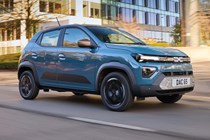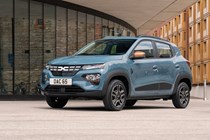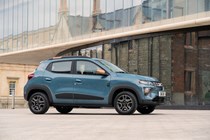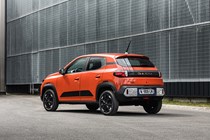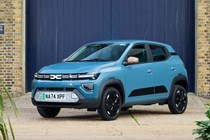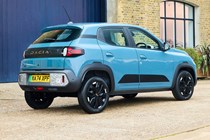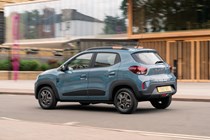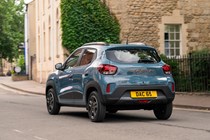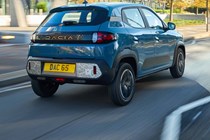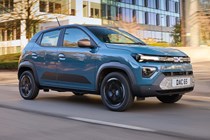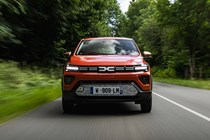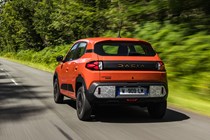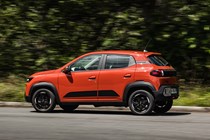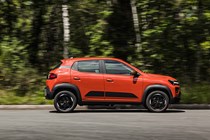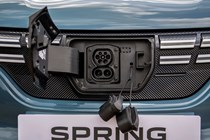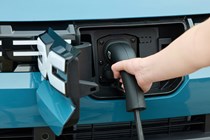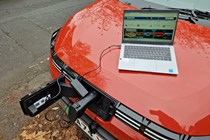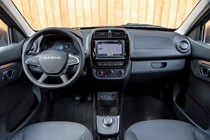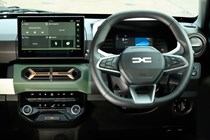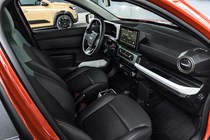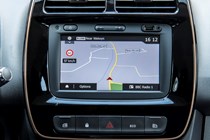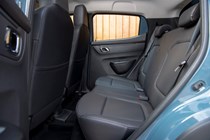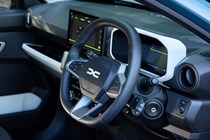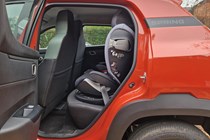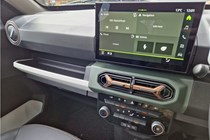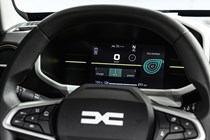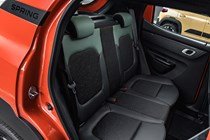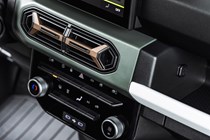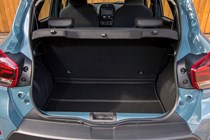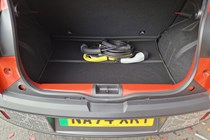Dacia Spring engines, drive and performance
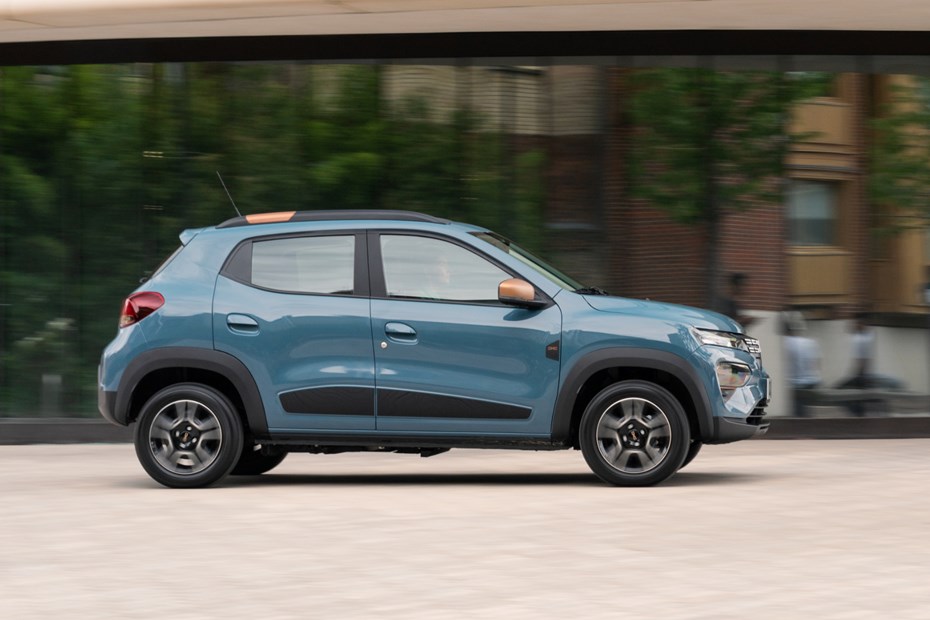
- Choice of two electric motors
- Most powerful model has just 65hp
- And that’s the least of the Spring’s problems
What power options are there?
Dacia sells the Spring with a choice of two electric motor options: 45hp and 65hp. By modern standards those are remarkably low horsepower figures, made only slightly more acceptable by the entire car weighing less than a tonne.
It’s probably for the best that the 45hp variant is limited to the entry-level Expression trim level. For context, that’s the same amount of power as the electric Mini Moke you can now buy. While the accompanying 125Nm of torque (pulling power) should make urban driving okay, the lethargic 19.1-second 0-62mph time makes it one of slowest accelerating cars currently on sale.
Full disclosure: Dacia has so far only made it possible for us to drive the 65hp model.

Nine out of 10 buyers are expected to opt for this extra oomph – with 60% choosing the high-specification Extreme trim in the UK so far. This makes sense to us when the 44% increase in power costs as little as £1,000, and cuts the 0-62mph time down to 13.7 seconds. Weirdly, this version has slightly less torque (113Nm) but is still quicker at lower speeds as well, taking 3.9 seconds to reach 30mph instead of 6.0 seconds.
Around town, 65hp feels more than nippy enough. But out on the open road you’ll need to plan overtaking with care and be aware that merging with faster traffic from a slip road will also require thinking ahead.
Both versions are limited to a top speed of 78mph; maintaining 70mph requires more effort than you might expect, as the Spring is naturally inclined towards travelling more slowly. This is reflected in its poor high-speed efficiency (more on this on the next page of this review).
What’s it like to drive?
- Dacia has gone for comfort and botched basic handling competence
- Grip is limited, steering lacks any feel, body roll is excessive
- The resulting driving behaviour would stop us buying this car
Driven sensibly at town centre speeds, the Dacia Spring just about makes sense. The steering is light, the turning circle is excellent, the boxy shape means good visibility, and the 65hp model has enough poke to deal with joining rush-hour roundabouts.
It’s also clear that Dacia has done its best to make the Spring comfortable – something that’s not always easy in a small car with a short wheelbase (the distance between the front and rear axles). It sits high on suspension that’s soft enough to cope with the ruts and bumps of scarred city streets without jarring the latte out of the clip-on cupholder. Actually, you might still spill your coffee, but the people inside won’t be jolted about too much.
But even at these speeds there are issues. While most rivals come with well-recognised mainstream brand tyres, Dacia has fitted low-cost Chinese rubber from a company called Linglong. If the surface is slightly damp or there’s a bump that unloads one of the driven front wheels, it’s incredibly easy to set the tyres spinning and scrabbling for grip.
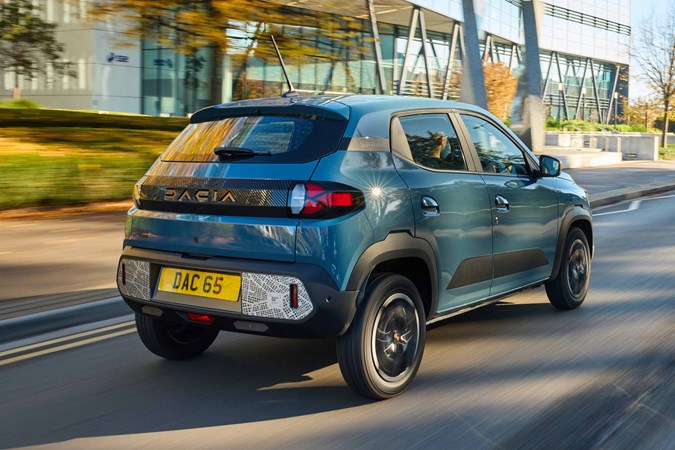
Start to go faster and the fun really begins. The lightness of the steering that makes city driving such a doddle translates into an eerie information vacuum at higher speeds. Coupled with such limited front end grip and such soft suspension, we found it very easy to overwhelm the front of the car – it simply does not turn into corners with anything like the directness, capability or body control we’ve come to expect from even the least enthusastic modern vehicles.
Making things even more exciting, as the body rolls on the soft suspension, it leans over the front outside wheel so much that the back of the car starts to go very light. Which can lead you from eye-opening understeer (where the car heads straight on rather going round the bend) into concerns about oversteer (where the back tries to overtake the front). It feels like something underdeveloped from the 1980s or 1990s, not a car introduced in the third decade of the 21st century.
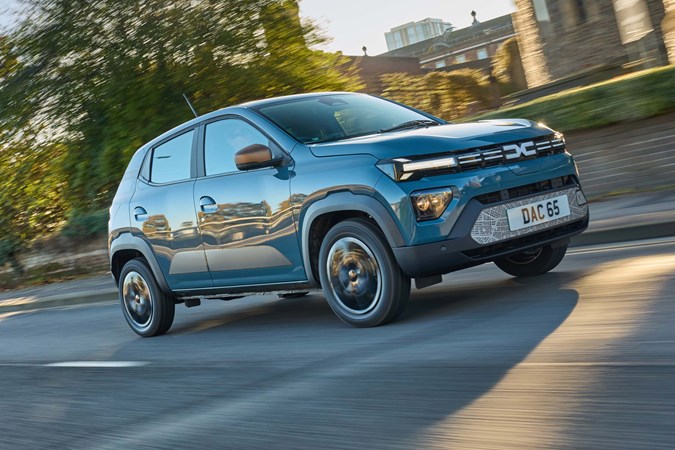
Throw in a direction change due to a sequence of corners or an exit from a roundabout and the inertia exacerbates the effect. The stability control should kick in before things get too far out of hand, but we were able to generate successive ‘whoa’ moments without any sign of intervention.
Once you get used to it you can drive around these characteristics, or with enough space you can endure the body roll and even start to enjoy the rollercoaster. Some may go further and suggest this behaviour is involving – but that can only be in the context of the sheer basic competence of almost every other car on sale in comparison, which don’t require the driver to work so hard.
Put it this way, any initial thoughts we had of purchasing one of these as second car for family duties have been well and truly quashed by the driving experience.


